Rachel Armstrong’s presentation at Starship Congress so impressed me that I was quick to ask her to offer it here. I’m delighted to say that it will be only the first of what will become regular appearances in these pages. Much could be said about this visionary thinker, but here are some basics: Dr. Armstrong is co-director of AVATAR (Advanced Virtual and Technological Architectural Research) in Architecture & Synthetic Biology at The School of Architecture & Construction, University of Greenwich, London, a 2010 Senior TED Fellow, and Visiting Research Assistant at the Center for Fundamental Living Technology, Department of Physics and Chemistry, University of Southern Denmark. She completed clinical training at the John Radcliffe Medical School at Oxford in 1991, and in 2009 embarked on a PhD in chemistry and architecture at University College London.
Perhaps only someone with this kind of diverse training could tackle the novel approach to building materials called ‘living architecture,’ that suggests it is possible for our buildings to share some of the properties of living systems. And clearly Dr. Armstrong is just the person to head Project Persephone, the Icarus Interstellar effort to conceive of worldship designs that are themselves living and sustainable for millennia, not so much artifacts as emerging entities that evolve over time even as they nurture their starfaring inhabitants. In what follows, Dr. Armstrong gives us a glimpse of arriving colonists adapting to a new planet and then moves on to describe how the worldships that carry them might function.
by Rachel Armstrong
“A world like ours, except for the emptiness.” Oliver Morton, 2003.

There is a small cluster of dwellings, on a watery planet way beyond this solar system, where pioneering explorers called Newmans, who have come down from the artificial moon, hang out. They are joined in their terraforming activities by oddlings who are not quite Newman – they have a more sprightly stride and a quicker eye for new signs of life. The Newmans have travelled across the centuries to establish themselves on the planet Gliese 581g. This was rather a mouthful, so they renamed it Nostalgia. Their first terraforming move was to sprinkle the precious dirt from their homeland into the planet’s atmosphere, which carried living seeds from their laboratory experiments. After decades, these creeping chemistries went ‘native’ with interesting results. Now slithering scoundrels flop, gaping out of the silt and flap tirelessly on the beach in an evolutionary race to gain a colonizing foothold on the hallowed dry land.
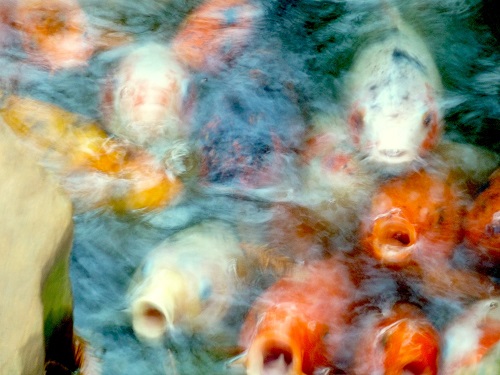
While the sentinels, who have only just evolved their magnificent tri-legs, which raise their skinny bodies out of the puddles, scream “no room!” and pick off the scoundrels in droves as they flail helplessly, in the effort to dry-dirt upgrade. But these frantic events make the planet sound like it’s teaming with life, when it’s not. Despite the sentinels’ protests, there is plenty of room. Yet the ecosystem is fragile and if it was not for the Newmans, it might have been a few billion more years before the carbon rich silt yielded any life forms at all. However, once loosed, the Newmans’ laboratory cultures have made a very good job of metabolising the dirt, and have literally, succeeded in eating themselves into existence. Every evening in the thirty-hour diurnal cycle, which is precision marked by the geyser clock, the Newmans stroll down to the brimstone lake and dip their bread with a giant spoon into the simmering waters, so they can feast upon the protein-rich pinworms that devour the succulent bait.
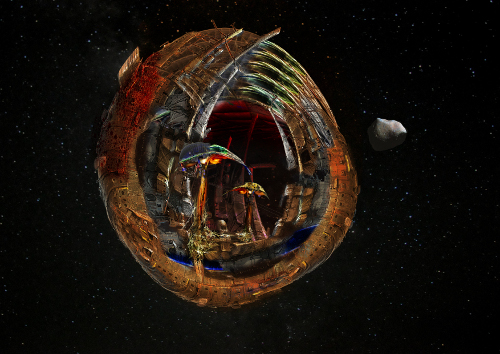
The pinworms have only one collective neurone that glows prettily when they swarm. But as lovely as their thin thoughts may be, they can weave no memory of the previous night’s feast. So the pinworm learn nothing about their fate and continue to devour the bread – made by the Newmans from flour that is carefully ground from the leftovers of pinworm feasts. Yes, it’s a strange place – but no stranger than the planet from which they hailed – a former blue, watery planet where the ice caps had long melted and the only remaining evidence there were ever oceans was a steam clogged atmosphere that never stopped spewing torrential rain.
The Humans, the evolutionary ancestors of the Newmans, built their worldship from space debris and fled their planet, which was in shockingly poor condition. The ship ripped itself from Earth’s orbit as the nuclear fusion engines were started and the already nostalgia-struck explorers rubbernecked for one last fleeting view of their home. They were expecting a memorable spectacle and were disappointed. The massive communications holofields gave them no farewell view of the pale blue dot of legend, but soiled their memories with a dirty, greyish mass – which was scarred by the creeping cracks of vast gullies, poisoned by leaking piles of toxic plastic and gnawed by flash floods. Indeed, these inhospitable conditions would drive the Humans that remained – to seek shelter as their world collapsed in an eyeless, subterranean existence.

But, of course, fantastic voyages to other worlds and what adventures they may hold, are as old as storytelling. Yet in the modern age we have access to technologies that enable us to write our dreams beyond the world of stories and transcribe our imaginations into physical forms. It is impossible to say which leads – reality or our imaginations – since the two are so tightly coupled that philosophers are unlikely to ever need to worry about their own obsolescence. And yet, surfing the tidal time wave of change not only requires agile thinking and the capacity to act upon it – but also relies on our ability to think beyond our conventions and customs. At the start of this millennium we have adopted a condition of comfortable familiarity and Romantic idealisation of our resources on earth. Under the self-regulating gaze of Gaia these, rather magically, never ‘really’ get old, run out or even poison us – an irony indeed as our industrial processes turn our cherished idylls into the toxic landscapes that are ‘not quite fatal’, described by Rachel Carson.

While futurists look to the horizon, or scan the blue sky for solutions to the conditions faced by humanity in the 21st century, they seldom seek to explore the black sky for insights and boldly probe the possibilities of the completely unknown. Indeed, some consider interstellar exploration a folly when there are more immediate problems to fix using our tried and tested approaches. Yet, when these established methods are actually part of the problem itself, it is time to take Einstein’s advice and step outside of our comfortable cognitive space that gave rise to the problems in the first place and plunge into the abyss of black sky thinking – not as a self-destructive act – but a creative tactic to uncover fertile terrains that may inform the choices and actions of our current and future generations, both on Earth and amongst the stars.

Yet if we are to conceptually and physically leave the planet for the sake of human advancement and expansion, then we first need to consider what it means to be ‘earth bound’. Earth bound is a term used by Bruno Latour to describe humans that recognise the Earth’s ecology as being integral to their identity. Earth bound therefore depicts a cultural condition for those generations that are always heading for earth, as they are unable to escape its materiality and its laws. In interstellar terms, we are earthbound, being tied to and shaped by our materiality and seeking other habitable earths that will promote our survival. Perhaps we may even carry our native terrestrial soils with us, so we may flourish in lands way beyond our origins.

I am project leader for Persephone, which is one of the Icarus Interstellar projects that catalyse the construction of a crewed interstellar craft within a hundred years – and responsible for the design and implementation of a living interior to the worldship. Although the details of Icarus Interstellar have not been formalised, the ideas that I will share with respect to the design and engineering of Persephone, are best suited to a Slow, Wet Worldship. You may even imagine this soggy interior as being in a very physical sense, ‘alive’. If it is to survive interstellar travel over evolutionary timescales, which may exceed a thousand years – then it will need to gather resources from extra terrestrial sites. But, where do you start in designing and developing a ‘living’ interior for such a vessel? The vital technologies for a worldship do not depend on mechanical systems alone but also soft, nature-based ones – like the ones, for example that encircle the outer surface of our own planet – which carry out useful work through metabolism – and challenge our notions of ‘control’ through their innate agency. Indeed, for a living system to be sustained, it needs to be kept from reaching equilibrium.

In other words, the design and engineering priorities are to preserve flow and flux – rather than maintaining the integrity of a hierarchical series of objects, as in the case of machines. But once living systems are established within a niche environment, they bring many unique features that increase survivability – such as, robustness, flexibility, the ability to deal with unexpected events, the capacity for propagation and the propensity to adapt and evolve, even when there is a relatively limited flow of exchange, as in a troglodyte cave. In thinking about evolutionary timescales, they are most frequently depicted in space operas as modifications of current humans and machines, where the surroundings – the living spaces in the worldship – may be taken as a constant. But in space, the fate of the earthbound is tightly coupled to more than just their machines. When they evolve, it is with their whole ecology – and while we do not factor this in for a terrestrial setting, it may be critical to take a holistic view for long term space colonization. Persephone therefore aims to deal with worldship habitats as extended human ecosystems and as a point of reflection on our current ecological challenges.

Perhaps you have recently heard someone observe that the human body is 90 percent bacteria. These collections of microbes are called the human ‘biome’ and they appear to be critical to our health, nutrition and even in regulating our moods. While we consider these relationships as being symbiotic in a terrestrial environment, we have no idea what happens to them over prolonged time periods in a worldship – especially as bacteria evolve much faster than we do. Well, not quite no idea – the Salmonella pathogen has been shown to increase its virulence 3 to 7 times under reduced gravity in the ISS, as the result of ‘fluid shear’ which makes the bacteria think they’re inside a gut.

However, from an ecosystems perspective, Persephone is also aware of the difficult task it faces as the new kid on the block in the challenging legacy of biosphere design.

Richard Buckminster Fuller, viewed the earth as a ‘well-provisioned ship, on which we sail through space’ – a neatly, cling film wrapped, pale blue dot – surrounded by a dark, murky universe – that is separated from the cosmic fabric by its exalted earth-ness. But David Deutsch has criticized Fuller’s lyrical idea of Spaceship Earth as a harmonious habitat, afloat in a barren cosmos – as being difficult to defend, even metaphorically. In only 4.5 billion years our sun will become a bad tempered red-giant, prone to cosmic fits of ill temper that will swallow us whole. Deutsch echoes Darwin’s view of the world, governed by a Nature that is ‘red in tooth and claw’ – and while it creates – it is also ready to tear our world apart.

The first real effort to create a terrestrial ‘ark’ to demonstrate that careful management alone can produce functional ‘closed systems,’ was the Soviet BIOS-3 series of experiments that ran from 1972 to 1984. They supported a community of three people supported with an algal cultivator and a ‘phytron’ where sunlight was simulated to grow wheat and vegetables. While BIOS-3 demonstrated that chlorella algae could produce oxygen and that it was possible to recycle up to 85% of the water in the system, it was not a ‘closed’ biosphere. Dried meat and energy were provided from external sources and human waste was stored instead of being recycled back into the system.

The mission was attempted again with Biosphere 2 in the 1990s that aimed to understand how people in close confines, in a closed ecological system could work together over a sustained period. Yet, it was quickly clear that despite being equipped with a desert, rainforest, and ocean – it was going to be very difficult to create a sustainable environment. Oxygen levels steadily fell, the ocean acidified, internal temperatures rose, CO2 levels fluctuated, vertebrates and pollinating insects died, while the crew became depressed, dysfunctional and malnourished. Only the cockroaches and ants thrived.

Of course, there is nothing ‘sustainable’ about closed systems, despite McDonough and Braungart’s success with promoting their industrially friendly Cradle-to-Cradle approach. The truth is that closed systems, with living things in them – are coffins – and will ultimately grind down to an entropic halt. Regardless of the attractive view that Fuller paints of our world, Earth is not and has never been a closed system – it gets external energy, lots of it, from the sun and is constantly bombarded by cosmic rays, one of the sources of mutation and variation in our DNA. Yet, for those who would like to insist that the earth is closed because ‘effectively’ no matter leaves the planet – other than the notable exceptions of space telescopes, robots, kilograms of bacteria and piles of space junk – it is perhaps worth remembering Einstein’s equation E=mc2. This elegant concept describes matter and energy as different versions of the same thing. So, in physical terms – our planet being soaked in sunlight – can be regarded as receiving a continual flow of matter.

Indeed, the Earth receives many cosmic packages in a more familiar material form as meteorites, asteroids and cosmic dust. Our planet is being rained on from space. The majority of meteors that bombard the earth are little more than particles of dust. Larger ones enter the earth’s atmosphere and rapidly burn up to form small meteors, and micrometeorites. Ten thousand tons of this extra-terrestrial shrapnel falls on the earth every day. Admittedly the more spectacular large-scale material payloads are no longer so frequent in the vacuum of space that they’re abundant – but they are not THAT rare in the history of the earth. Indeed, Paul Davis notes that earth’s oceans were leftovers from intense asteroid bombardment during the Hadean period. And earlier this year an asteroid exploded over the region of Chelyabinsk in Russia bringing its heavenly gifts of destruction, mayhem and a smattering of weakly magnetic, radioactive rocks.

My point is that in proposing a ‘living’ interior for a worldship, which contains living things – the system needs to be imagined and designed as an open system – or our worldship will become the universe’s most beautifully designed and best travelled compost heap. Yet, even if we can build a worldship to operate within an ‘open’ cosmic system that can munch on cosmic foods such as, electromagnetic spectra and dirty asteroids – there is an even a deeper issue to address, which relates to the way we design and engineer with lifelike systems.

In 1948 Erwin Schrodinger noted that the characteristic of life is that it resists the decay towards entropic equilibrium. This observation is profoundly important when thinking about the design of an environment for living things, as it requires us to consider far-from equilibrium conditions as the substrate for our interventions. This flies in the face of all our design efforts to history, because when we design, we generally assume that our surroundings are at equilibrium and therefore we are engaged in making a world of objects. Yet, if we look at the very large and very small scales of existence, this object-centred version of reality does not hold true. When the atom was split last century, strange subatomic particle worms were released into reality and our imaginations – as leptons, bosons and hadrons. And when we dive down into the nature of these massless specks of matter, they are anything but still, existing as probabilistic clouds of nearly nothingness. Their essence is so primitive that they do not exist in nature and can only be experienced in the most indirect way of ‘seeing’ anything ever.

In the biggest Swiss watch ever made – the Large Hadron Collider – a whole particle superhighway is dedicated to evidencing the imperceptible. Buried 100 metres underneath the Swiss/French border, the LHC viewing platforms orchestrate miniscule Ballardian fantasies by smashing primordial plasma streams, of hydrogen and lead ions, into one another. As the particles shatter in layers upon layers of thick sensate materials, sophisticated algorithms interpret their screams from the wreckage and translate them into digital visualizations. And once you’ve witnessed the screams of a particle dying, how can anything around you ever be still again?

In building a new world, Persephone is invoking the existence of a new nature and if we are to design a space that supports dynamic systems, then we must learn to effectively design at non-equilibrium states – and create environments with material flows, whose cultural equivalent is dirt. Design hates dirt – as it is aesthetically and materially subversive. Yet the various forms of dirt – such as, shit, grit and dust – when combined, have powerful transformative potential.
In space, shit is surprisingly useful.
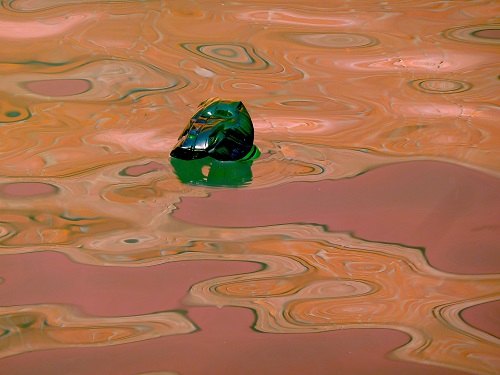
Dennis Tito’s ship will protect its astronauts from cosmic radiation using food and water, which contains more radiation absorbing atoms than metal. And since organic matter blocks rather than absorbs the radiation, it apparently also remains safe to eat. The lucky married couple’s excrement will gradually replace these larder supplies during their round-trip to Mars scheduled for 2018. Yet, practical development of the concept is needed so Tito’s space honeymooners, and generations after them, don’t find themselves in a round trip to a sub standard hotel in Benidorm, full of unpleasant sights and smells. However, these concepts add ecological depth to the idea of space travel. More than 90 percent of wastewater can be recovered using membrane-filtering techniques – and indigestible fiber in human faeces can be transformed into a material that resembles an adobe brick wall. Greenhouse gases – namely carbon dioxide, methane gas and water vapor – can also be harvested. While these processes are not cost effective in short-term missions, in long-term missions – where systems are effectively closed – these approaches are increasingly valuable. Therefore when building for worldship interiors, it is worth remembering that all civilizations are founded on their relationship with the potent transformer that we call soil.

Persephone’s first task is to identify her native soils – to transform and develop them into subjects worthy of design – exquisite stuff – that is not simply a life-support system – but provides the very context and meaning for living processes. Soils are a living web of relationships within complex bodies that will eventually grow old and die. Plants take root in the rich chemical medium and bind the particles together to attract animal life. Conversely, soil harbors fungi and bacteria that break down the bodies of dead creatures and turns them into more soil. The speed of this dynamic conversion process varies. In fertile areas it may take fifty years to produce a few centimeters of soil but in harsh deserts it can take thousands of years. Soils are biological cities. They house, nourish and provide the vital infrastructure for terrestrial life, which laid the foundations for the establishment of ecosystems, the evolution of humans and the construction of the built environment. The rich complexity of soil systems provides a model and literal substrate for a built environment that can self-maintain and connect with ecological systems.

On the face of it – it may appear a straightforward thing to grow a soil – like we might construct a building. Soil scientists observe how we can mix the various particles, adjust the acidity, compost the organic substrate and bring these inorganic and organic worlds together. But making a soil is more than measuring ingredients for a recipe, they are composed of matter that possesses the vibrancy and vivid hues of the rainbow, embody the poetry of symbiosis – and perhaps most importantly – they are our binding contract with Nature.

But how may we forge a contract with Nature in space, where no native biology is known to exist – only physics and chemistry. Over the last few years, I have been working with living chemistries and synthetic biologies, shaping materials that possess a will and exert a force of their own, independently of a central program or my design and engineering intentions.

These materials have formed primitive, dynamic cell-like structures – or protocells.
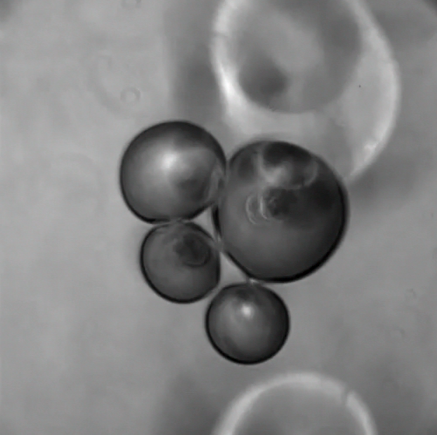
I have been able to clump these primitive chemical assemblages into oily vessels to punctuate a cybernetic, hylozoic ground where they fixed carbon dioxide from gas hungry solutions.
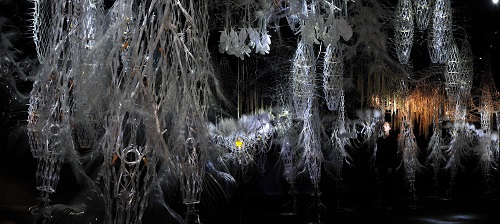
I have used gravity to infiltrate gel-like matrices that creep towards the ground, producing Liesegang bands of chemical separation and reconciliation.
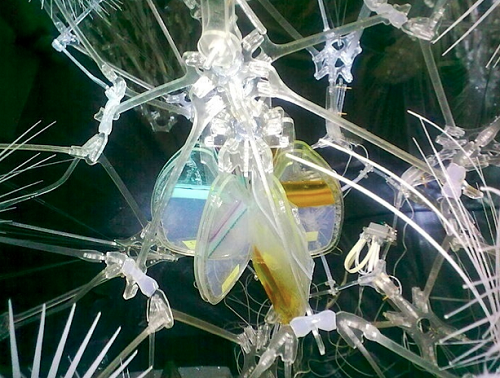
And I have exploited the relentless splitting of crystals into rhizomatous mucous fronds, which lengthen and grow when entangled with carbohydrate polymers.

Persephone proposes to create her soils, before she even contemplates the possibility of ‘life’, by applying the physical and chemical principles of their native environment. She aims to develop an architectural practice of natural computing – a term inspired by Alan Turing’s interest in the computational powers of Nature – to produce a new kind of spontaneously self-organizing and autopoietic system that is unique to the worldship. Persephone will harness the creativity of particle worms and develop their connections at different scales using the parallel processing power of chemistry to create a condition of fertility that, within definable limits of probability, may give rise to its own life-like events.
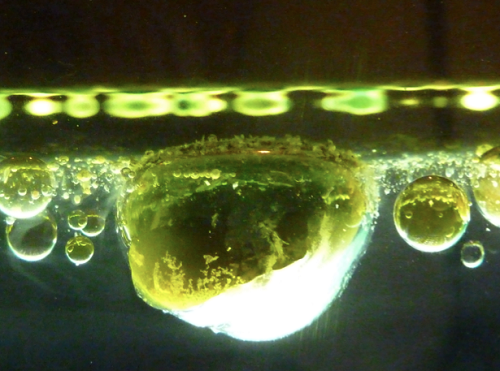
Soil is a probabilistic matrix that is peppered with events and flows, within which life is not inevitable – but increasingly feasible. It inserts time and space into chemical systems so that the potent conditions are delayed from reaching equilibrium and happen again and again and again. Soil hosts many chemical events that arise from the horizontal coupling between dynamic systems. It may give rise to living things by facilitating chemical assemblages such as, Stuart Kauffman’s autocatalytic sets. It offers a fertile field in which living things are anthropogenically midwifed into existence by farming technologies. Yet, while life is the event by which we may measure the success of soils, it is the product of a multitude of partnerships that form the heaving, squirming mass of soil bodies. Soils are the site of huge amounts of metabolic work, which shape the muck that decides whether ecosystems will thrive and ultimately, produces the conditions that give rise to cities.
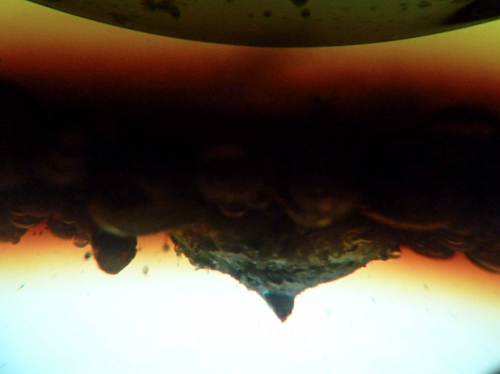
And here, Persephone’s challenges begin. Although this presentation began with a story, the project itself is real and fully intends to go ‘beyond’ fiction, proposing that the way of opening up new worlds is first through the imagination, where uncertainty is a driver for radical creativity in a probabilistic, cosmic landscape – the Black Sky.

Whatever the odds of Persephone’s success in her endeavours, she is aware that she will not triumph because of the odds – but in spite of them. Indeed, the only way to guarantee her – and our own extinction – is simply to take our continued existence for granted and hand over control to the ants and cockroaches, without trying anything new, or daring at all.
——-
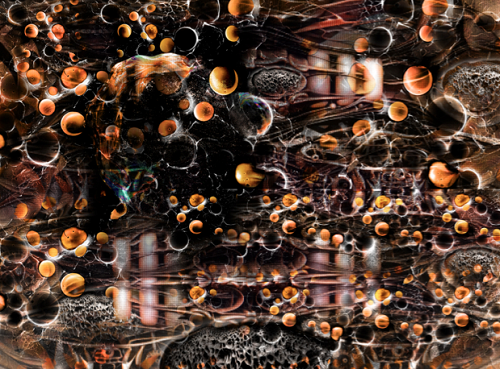
And now, the oddlings looked up to the sky under the green reflected light of their artificial moon – simply called Newman. Sometimes they could see the stars twinkling between the cracks in its regolith and asteroid shell and at other times they wondered how things might change when the other Newmans came down to settle Nostalgia’s surface. But each night, little changed. The pinworms continued to swim brainlessly in the brimstone, the scoundrels floundered and the sentinels wrapped their long necks around their tri-legs, as they settled down for ten long hours sleep before the dawn broke – and all the metabolic slithering started again.
——-
“They will not be a new story’s beginning, rather the creation of a new chapter. Their expectations and hopes are already being created on the Earth today …” Oliver Morton, 2003.



http://www.projectpersephone.org/pmwiki/pmwiki.php
My first cut was made in 2006, before Icarus Interstellar even existed. I circulated links to some of these articles to those I thought might be interested, encouraging people to pass them along to anyone else interested. And ….
One hauntingly similar riff after another, albeit with a more biological emphasis, for a world in which humans (as we now know them) hardly make an appearance.
Another significant point of departure: I wrote “… although an orbital aquarium has its attractions, water is heavy, therefore expensive to launch, just to provide a volume medium for living things. Exovivaria ecosystems might be relatively xeric (dryland ecosystems) for this reason alone.”
Dr. Amstrong imagines a wet world. It makes for better imagery. Which is really just about the only product of Icarus’ Interstellar’s Project Persephone. It makes for better imagery, I’m sure. But I want to see things actually built and launched, in my lifetime. Whatever my deficits in biology knowledge, I know better than to fight physics.
I have always seen World ships as only as moving stepping stones. In say a 100 years after one is launched it will be over taken by newer technology craft, which can pick up some of the crew or even alter the whole world ship and thus accelerate the expansion of humanity.
Rather than stepping stones, I see worldships as significant turning points. If we do build and launch them, they could well mark a bifurcation in our species — the humans that arrive after many millennia may have become so adapted to their environment that they’ll view planetary surfaces as more exotic, and perhaps less interesting, than tuning their own biospheres in space. I suspect many, after investigating the new planet, would opt to launch to another system, essentially choosing to remain space-dwellers. Whereas those faster ships you mention might well deliver people more or less like us, who see planets as our natural environment and want to keep it that way. Both branches of our species might build robust futures as they expand into the galaxy.
I look forward to reading how a worldship is going to be able to acquire new physical resources unless it travels very slowly and there is an abundance of cometary material between stars such that it can be harvested in short enough intervals. Do the numbers actually work for this?
While denigrating Biosphere 2 as a “closed system”, you then suggest that the Earth isn’t because it uses sunlight to drive its systems – the very same sunlight Biosphere 2 used.
Nonsense.
Over 4 billion years, that still only amounts to 10^-5 of the mass of the earth. Almost insignificant, and certainly so compared to the mass cycling by geology and biology. The earth is effectively a closed system with regards mass.
Because no known biology exists in our space, that doesn’t mean we need to design [fanciful] synthetic life from scratch. Tthe easiest solution would be to take terrestrial soil, rather than the posited artifial life forms posited. It may need to be adapted, but that is going to be much easier than integrating synthetic life with current biology that has had millions of years to co-evolve into robust ecosystems.
I think it is an admirable, reasonably out of the box, approach to try to design the ship itself as a partially synthetic life form. Certainly synthetic life may well have a role to play in some ship’s systems, but to imply, as this article does, that we need to develop these synthetic [pseudo] life forms to make a viable worldship is just day dreaming. Day dreaming can be very useful, but I just do not see the presented approach leading very far to solve the worldship (or even space colony) idea.
Excellent article with some truly original and imaginative ideas.
One of the things I thought of reading this is that the building of world ships will inspire and be inspired by the growth of orbital habitats. I wonder if the first bifurcation will be between those who remain living on earth and those who migrate to habitats orbiting the sun, perhaps closer in than one AU.
And the experience gained in permanent orbital life will encourage some to make the next logical step, hopefully with advances in propulsion already developed for use with interstellar probes.
And those solar orbital habitats will definitely be open systems, definitely living off the terrain of space, and definitely breeding a new sub-species of humanity adapted to greater radiation and lesser gravity.
Or so I imagined reading this posted article.
I wouldn’t read a piece like this as closely as some. Dr. Armstrong’s appealing mix of poetry with science is spot-on. We are way too early in the process to criticize at a deeper level.
She’s given us a beautiful thought essay. Clearly, the right person is in charge of the ship.
What Michael Spencer said. What makes this good is the quality poetry, or artistry, of the presentation. What makes it work is its science.
In developmental phases of ideas (conceptual even), science or understanding can always be replaced and bettered. That’s how development works. Using a starting place with a destination in mind, we make course adjustments which are intended to enable optimal progress and eventual achievement.
What gave Dr Armstrong’s presentation its resonance is the use of evolutionary allegory and historic biological illustration to paint a picture of What Can Be in terms of an interstellar humankind.
In contrast to the static (as opposed to dynamic) or unimaginative [sic] conceptions of interstellar space exploration and an interstellar humankind, Dr Armstrong’s work gave/gives an impression of humanity-as-wondrous without giving ground on material science such as engineering and physics.
A tremendous success. Good science is often messy and nonetheless good and beautiful too. Very much like everything.
@Michael Spencer. There is a long history of “utopian” architects that have advocated “biotecture”. The idea is very attractive – instead of dead structures made of the material du jour, have the buildings (“machines to live in”) be living so that they recycle resources, have low carbon footprints, etc. You can see this line of thought goes back at least to Rouseau. However, these ideas never get beyond pretty drawings or project examples for obvious reasons. It is certainly possible that one reason is that they were too early, that technology needs far more development before such ideas can be realized.
Dr. Armstrong envisages a “wet” worldship. Essentially a living version of Soleri’s inflatable space city “Asteromo”, with engines attached. We’ve discussed worldships before, with the idea that they slowly expand their range by “island hopping” from one Oort cloud object to the next. A very slow way to reach the stars. More commonly, worldships are envisaged as traveling at some low fraction of c. However, the energy demands are huge.
Remove the engines and woldships become O’Neill’s and much more sensible as solar system habitats.
For star travel (without new physics) we should be looking to minimize energy requirements. To me that directs attention in a different direction.
I do think synthetic biology has a very important role to play in interstellar colonization. I even buy Armstrong’s poetic first paragraph about terraforming, albeit not in the way she imagines it (a bit “Prometheus-like” for my tastes). “Good enough” technologies that are cheap, easy to develop, and replicate are more likely to succeed than complex, expensive ones that are costly to replicate. Whether we like it or not, very small vessels that develop and “spawn” at their target are likely to be more successful at colonizing the stars than worldships.
I am sure this article has high literary merit (which I am not qualified to judge), but I have to say I am with Alex in that when it comes to science it is mostly meaningless musings (although beautifully alliterated at times), peppered with quite a few statements that are nonsensical or plain wrong.
Let me add just this one:
Last I heard bacteria are less than 1% by weight or volume and 100-fold by cell count. What is the measure of those 90%?
As for a world ship being an open system, I have to say open to what? The hard vacuum? There is no matter in interstellar space in useful amounts, nor any means to pick them up while traveling. Nor is there energy, in useful amounts. To operate its drive and to maintain the disequilibrium of life, a world ship has to carry a source of energy with it, or else arrange for it to be beamed from home.
It is a nice point that equilibrium is the enemy of life, but then again, this point has been made so often and for so long that it isn’t particularly exciting anymore.
A Bloomberg BusinessWeek feature article highlights Korean heavy industries, which in a nutshell builds the world’s largest moving superstructures: oceangoing ships and oil rigs. Until Dr. Armstrong’s vision is achieved organically, human engineering will reign and this is how it will look (Copy and paste this URL in your browser’s address bar: http://www.businessweek.com/articles/2013-09-05/risk-ahoy-maersk-daewoo-build-the-worlds-biggest-boat#p1)
Of note, the manufacture of the ‘Triple-E’ class ship at 1,312 feet in length “was able to meet the efficiency requirements without any revolutionary propulsion or metallurgical technologies. Rather, [the client] Maersk used a set of clever tweaks to adapt existing ship features to its size. On the most basic level, the ship was designed to maximize container space.”
Our first worldship will need the advent of reliable assembly line methods of sending raw materials to low-earth orbit, like LiftPort’s dream of a space elevator, or a rail gun. This is in addition to mass transport of large numbers of assemblers, whether they be human or machine. I suggest they would be drones operated by individuals on the ground, working under the direction of a mission control and project management team, welding and bolting metal together, the critical inspection process not far behind in a specialized drone or human expert.
That our worldships would resemble tankers has a long history of science writing behind it. A space tanker could be imagined as the substrate on which living, organic structures grow to create habitable space for autonomous creatures. Whatever their filled with, water or soil (and I agree with Michael Turner that it would be xeric, or dry) is moot only to the extent that we’ve mastered low-earth material transport.
In Polish author Stanislaw Lem’s wonderful novel Fiasco, he imagines an alien civilization as spores which make gigantic superstructures, including a means of shoving huge volumes of water into planetary orbit, forming an artificial ring system. If humans master, say, carbon nano technology or other superstrong material that can create a ‘space straw’, we could likewise suck up volumes of seawater and shoot it into space for worldship material. But this is tangential to the worldship/container ship construction itself, in whatever shape our containers take.
Again we are confronted with the strange consensus-attitude percieving the 1990’s experiment in Biosphere 2 as something WRONG , perhabs even sinfull.
Its really much like nuclear power or human genetic engeneering : you don’t have to waste time eksplaining why it’s bad , it just is ! SINN !
It’s very , very sad that no one, 20 years later , has found the time , money or courage to repeat and improove in a serious way on Biosphere 2 with up to date tecnology.
This strange exteriment-vacum says a lot more about the limitations of closed thought processes , than it does about closed biologies which we know close to nothing about …
I have to say that I agree with the criticisms of Alex and Eniac. I was left wondering just how much progress has actually been made in the field of bioregenerative life-support systems over the past 20 years?
“Open architecture” – i found that revealing. It really made me reconsider a few things. About biospheres… i think the main fault was and is doing it from scratch. What i mean by that is… you don’t bring alog some specimen and resources, seal the door and hope everything works out as planned. That doesn’t work. Rather you introduce resources and try, by careful species introduction, to shape it step by step. When you manage to create an enviroment where humans can survive, then you move in. Cycles have to be established step by step, not everything at once. To unpredictable are interactions and adaptions, especially on the microbe side. When we say the environmen “breaks down”, what really happens is microbes breaking everything down to reshape the environment according to their preverences. Only AFTER that happened, you can move in. And taking in external resources is a very smart idea, one that i admitably totally neglected until now.
What I see as an opportunity for these ideas of self-healing structures to become more concrete is in the field of radiation-hardened self-healing materials.
Chemical Vapor Deposition is a technique used to add coating layers to mirrors and other opticals. In space though, such layers suffer degradation by radiation. This problem cannot be fixed with rigid materials; the material failures in any solid stay there, crop up, accumulating damage and decreasing the performance properties of the material
But what if we could replace the coatings with nanometer thick liquid films? We now know that capilarity behaves rather strangely at the nanometer scale: http://www.eurekalert.org/pub_releases/2013-04/miot-wff040113.php
A liquid surface is inherently self-healing. The ideal radiation-hardened coating must be made of a liquid film.
Is there a larger trend in the future for biologically-inspired engineering? Absolutely. Radiation levels in space will guarantee that the only devices that survive in space for long periods will be those that are able to repair themselves. But the devices will have to be closed against losses as much as possible, since the relative lack of complex atoms in deep space makes them completely irreplaceable
Space is not going to change to accommodate life so life will need to change itself to travel through space. This essay helps orient our thinking. The Trip we are discussing covers much more than mere lightyears. What actions must we take to make the required changes vis a vis biology, ethics, psychology, technology…?
Follow the rabbit trails! Kepler envisioned cosmic sails cut from canvas. We see them in mylar. Every journey is about eliminating options.
I’ve heard about Rachel Armstrong’s “living architecture” before, and wondered what it was. Well I’m afraid I’m not much wiser after reading this, except that I gather it has a lot of soil and water in it.
I was disappointed by the trashing of Earth in the story extract. I know it makes fiction easier to write, but will it inspire those who place value on preserving Earth’s environment, or whose families will remain behind on Earth after the worldships depart, to be enthusiastic about the interstellar vision?
Stephen
Oxford, UK
David A. Czuba, I think you are right, that our worldships are going to resemble tankers. But I don’t think they are going to be built on earth, not even their pieces. Not even their raw materials will come from earth.
There probably will never be a space elevator:
http://io9.com/5984371/why-well-probably-never-build-a-space-elevator
Not even on the moon (although the article mentions that possibility). Why have a space elevator on the moon when it has no atmosphere, it has low gravity, and it will be relatively easy to rail-gun material into orbit from the lunar surface?
My prediction: worldships will be build entirely of structures and parts fabricated either on asteroids, on moons, or simply as free-standing structures in various orbits and will be largely provisioned from material gathered, grown and synthesized off-earth.
Looks like it’s up to our next civilization, the Atlantean one, to exhibit the willingness, resources, and knowledge to succeed with worldship architecture…Perhaps an ice-free Greenland and the inundation of all of Florida will inspire them to get serious about civilization’s Plan B….the worldship….JDS
Theoretically, you should be able to “bottle” a climax ecosystem and have it maintain itself if you also maintain the other key environmental variables. In essence, that was what Biosphere 2 hoped to achieve, but using different ecosystems in the same bottle. In practice the mass requirements probably requires reconstructing it primarily by growing it. You want a redwood forest – then plant saplings. The problem I see is that almost any system you choose will have to be tested for some fraction of its expected lifetime. Which implies that any starship mission is going to be a long way off simply because of this.
Conversely, it sticks in my mind that O’Neill brought a pragmatic perspective to his colonies. If the ag areas get diseased, just open them to vacuum and use heat to sterilize them. Then restart. I personally think this farming approach may be a better way to go. Grow your food in batch mode, monitor it and control disease. Because recycling cannot be 100%, the ship will need material reserves to compensate. I don’t think that getting this from external sources during interstellar flight makes energetic sense. Similarly, light energy to drive carbon fixation will need to come from on board fuels, which suggests that during cruise mode, you want efficient photosynthesis. Algae is one way to go. Possibly synthetic forms. They have short life cycles, can be grown in sterile batches and controlled more easily than terrestrial crops. Hopefully food processing will be advanced enough to make algae palatable for the crew. But most importantly, testing of the system is going to be easier and therefore not a hindrance to the flight timetable.
One of the criticisms of the O’Neill colonies was that they would not be pleasant California/Hawaiian environments as depicted in the illustrations, but rather like Greyhound bus stations. I tend to think that is indeed going to be the case for a starship. It will be very much an artificial environment, with non crew life confined to factories and tight control of microbiomes and diseases. The best you get for natural landscapes are hi-def screen video recorded from Earth, or simulations.
I am not so sure. For one, nature ist interdependant. You need a working system for the confined space, and complex systems can’t be build from scratch. Those need to be cultivated one step at a time. Think about caves, arctic undeground lakes. There are places which have been isolated for millions of years. Yet life prevailed. We don’t need to develope this, it is already there. What we need to do is to learn how to shape this process according to our needs. Sure… you can take supplys along for the trip. But that strikes me as terribly inefficient. I am convinced there is a better way to do it. And quite frankly… it may be the only way.
What happens to an imune system not confronted with constant exchange of environmental factors. And microbe infestations in space are a huge problem. Aboard the Mir and ISS. I don’t think a sterile approach is the way to do it.
You see… if you aim for a sterile environment you sooner or later get something running amok that’s hard to get rid of. If you already have something occuppying that spot, chances are it can defend that spot. And prefer something useful in that spot, rather than something harmful.
You need to factor this in, and yes it needs a lot of testing, especially in low gravity environments. And i have a feeling a lot of the neccesary adaptions will be achived by the microbes on their own, without any big need for artificial intervention.
@David Cummings – we may not need to go the whole way to elevators – skyhooks might be a reasonable compromise in terms of costs and ROI.
I think that you are probably correct that the bulk of the ship may be fabricated from materials in space when space industrialization gets underway. Some hi tech parts may well be built on earth and shipped to the space yard. The path we take will no doubt depend on how humans and robots develop space industrialization and the cost of supply from earth vs space resources.
I thinks this is a terrific article, with a great balance between technical content and poetic prose, and its purpose and that of Project Persephone is clearly identified: “Persephone therefore aims to deal with worldship habitats as extended human ecosystems and as a point of reflection on our current ecological challenges. ”
For us hard core physicists and engineers, we do get stuck in our paradigms of thought, and its important to have others come in and disrupt that thinking. Anything that makes us think differently about the world ship problem, is a breath of fresh air as far as I’m concerned…currently we focus on the 1985 Bond/Martin world ship concepts which although were pioneering…they are extensions of todays technology and our current paradigms. Yet, our biology is converging with technology and this was not accounted for in this romantic visions of the past.
The application of this technology to Earth is also very alluring and brings with it the possibility of Starship technology being relevant to todays society and todays cities, and not just something of the far future, a requirement for convincing people of the validity of this journey we want to take, if we are to communicate the vision and the benefits of a human interstellar society effectively. The specifics of open/closed systems for example, are relevant to the particular design concepts. Rama rather comes to mind, a vessel which comes “alive” as it approaches a star.
There are lots of examples in science fiction of “living starships” of some sort.
The Vorlons and the Shadows of Babylon 5 use biological vessels. Then there is Moya in Farscape which has a sentient bioship. Indeed, isn’t the TARDIS in Dr Who also semi-sentient and telepathic with the Doctor? The ship and the crew are not separate, but integrated environmentally. There is also Dyson Trees, plants capable of producing a breathable atmosphere within spaces like a comet, self-sustaining habitats. There are lots more examples out there and we need to be taking a broader perspective on the problem, which the article is doing. Fantastic article and a great lecture too. A very welcome addition to the interstellar subject.
Kelvin F.Long
The only clear and usefull conclution from this round of debate , seems to be that no one here knows anything about closed system ecologies . This in itself is actually very surprising , because on most other topics someone here will manage to bring usefull knowledge into the debate .
Surprisingly , it seems that there ARE no sources to learn from , which again leads to the strange and for me disturbing conclution that NOTHING has happened in this field for 20 years .
An endless nunber of necessary and useful NEW experiments in the field can easily be imagined by anyone whith a scientific mindset , all of them just waiting to be done …
Forty-four years ago Neil Armstrong ventured forth on to the surface of the moon, taking one giant leap for mankind. From the strength of the thinking put in to this article, it really wouldn’t surprise me if in a little over another forty-four years in to the future, humanity may well be celebrating the name Armstrong all over again.
It is pretty clear that Dr. Armstrong has done her research and knows what she is talking about. I also think that the people who put such thought in to future projects of this nature using technology that we have yet to develop properly are incredibly selfless. In the quite possible eventuality that Dr. Armstrong’s vision for the interior of these first interstellar starships comes true, there remains the distinct possibility that it may come too late for Dr. Armstrong to see in her lifetime. How unselfish can someone be?! This lady is working on something, the fruits of which she may not taste herself. That strikes me as incredibly selfless. Certainly worthy of only praise.
I’d also like to add that I think the world needs innovative people like Dr. Armstrong. Humans have to continually change their way of thinking in order to progress. Einstein once said something about imagination being more important than knowledge, but yet here’s the thing…the writer of this article clearly has the knowledge with which to turn her imagination in to reality.
Nature and living organisms have been massively undervalued in my opinion, with regards to how we use their technologies. We talk about what technologies extra-terrestrials may have (and rightly so) but we are not even using the technologies that naturally occur all around us! I think Dr. Armstrong’s ideas for living architecture are ground-breaking and hopefully this will encourage people to think more about how nature can be so much more than nice to look at.
This is a very well written article, beautifully illustrated and I hope we can read more on Centauri Dreams by this lady.
@Ole Burde – on a related note, it amazes me that relevant life scientists are either not attending or apparently, consulted.
Ecologists and systems biologists would probably have some useful things to add to this discussion or worldships.
If you want some solid input on synthetic biology, then you need input from solid practitioners, like George Church.
Maybe starships are still too far off to seriously interest life scientists, although Earth and solar system projects are near term enough to be of research interest.
The general concern here seems to be over Rachel Armstrong’s propensity for hand waving, but mine is simpler. I ask for any evidence at all the inhabitants of biosphere suffered from “malnutrition” as stated here. I can see how it is conceivable to claim undernourishment, but their closely monitored levels of health were at their height during this period in question. That and other data would seem to preclude their malnourishment to me. If you know of any evidence for nutrient deficiency or excess in this experiment, I would love to hear it as it would be completely new to me.
The point may seem pedantic, but I would hate to see a myth emerging, considering how little data we have on these closed systems.
@Rob Henry
Good point. For other readers, here is a confirmation that the Biosphere 2 participants were not MALnourished.
Changes in Plasma Lipids and Lipoproteins in Humans During a 2-Year Period of Dietary Restriction in Biosphere 2
I would put this down to sloppy use of words by Dr. Armstrong.
‘Closed-loop’ habitats do seem to me to be something we’ll need to explore much more thoroughly, regardless of the technologies we use to develop them further in different environments (extremities of Earth, or in space…).
Reaching back to Ilya Prigogine’s definitions of non-linear / open systems, such systems would need to be [1] far from equilibrium (or heat-death); [2] auto-catalytic (ie containing replicators or catalysts that sparked continuing momentum and development); and [3] thermodynamically open to their environments.
Even a highly ‘closed’ system, out in the depths of space (as Dyson’s Ark Eggs) would be open if it could take in light in even limited forms, and if it let off any heat. So, when I was watching Rachel’s excellent presentation, I was interpreting ‘closed’ and ‘open’ in a more abstract sense; as a design philosophy.
After her session, during Q&A, I asked about this, and about what materials she would focus on to tackle the enclosure of a system given that anything in the cold hard vacuum of space would need some kind of non-failing enclosure. She answered by saying that she would pay special attention to soil. And, I actually found this to be a very interesting approach. I interpreted her as saying that, yes, the outer shell has tomb-like qualities which we seek to avoid, but that if we turn our gaze to the material providing the ground for our efforts, we might find a substrate that was much more yielding to experimentation, enrichment, augmentation, development, amendment (a gardening term), and so on. And that the key to keeping the enclosed biome from becoming toxic might lie here, in the inner shell that we could actually work with and work on and allow to work itself (ie, protocells).
She is onto something important, and we ignore it at our peril: If Biosphere 2 lasted a mere 4 years (1991-1994) right here on Earth, then we had better figure out how to work with the inner layers of closed-loop habitats in a way that makes them living, open systems long before we pin any hopes on a crew surviving for very much longer on the surface of the moon, or an asteroid, or a starship.
Soil as enclosure against the vacuum? I sure would like to know more detail on how that would work.
It would not, is the unfortunate fact.
In disagreement with many of those praising the article here I do not believe that this combination of loose play with facts and an abundance of fantasy constitutes a meaningful contribution to the issue at hand.
Forgive my bluntness….
Eniac wrote “ I do not believe that this combination of loose play with facts and an abundance of fantasy constitutes a meaningful contribution to the issue at hand… Forgive my bluntness….”, but I suggest a different tack to get that point across. Here goes
Why is Charles Darwin so famous as a scientist? Evolution was already believed by some significant portion of the biological community for the previous two thousand years. He wasn’t even the first to propose natural selection. So to those biologists who follow the warm fuzzies his position within science must look problematic.
Answer: Darwin was the first to propose that NO evolution occurs EXCEPT through the action of natural selection. That was what made it testable, and what transformed biology into a real science. The payoff is that you must accept that biology has no end design at all, and will only ever fix a problem that can be shown to be a consequence of NS’s action at EVERY step of its process.
@Paul Gilster: your description of humans from worldships ending up seeing planetary surfaces as exotic and ending up adapting their biology to space life (while as some people said, faster ships would end up arriving at other systems BEFORE the Worldships) sound a lot like the history of the OUSTERS, from the books Hyperion Cantos by Dan Simmons.
It seems to me that the idea of a single ‘worldship’ containing a single ecosystem is flawed because it lacks the redundancy needed to keep it safe. It would have to be heavily compartmentalised, with many small ecosystems that can transfer organisms, people and materials between each other whenever one of them crashes out – whether that be due to mutant pathogens, air leakage, or any of the other myriad reasons a spaceborne ecosystem might collapse. The crew and automated systems of the other modules would do their best to reconstruct the collapsed module.
The immunological ramifications of this would be an interesting problem – a system would have to be devised to transfer immunity between crew members (and other lifeforms) in different compartments, without simultaneously transferring the pathogens they are being immunised against, and – just as importantly – without inadvertently setting up any ecological dependencies between nominally ‘separate’ compartments. Otherwise, compartment-to-compartment leaks and transfers could wreak as much biological havoc as the arrival of Europeans did in the Americas.
These considerations would also apply to any habitat beyond the Earth. Though in our own solar system there would always be the possibility of a resupply from the terrestrial ecosystem, this would take a long time, might not be reliable in all circumstances, and would likely be much more expensive than a resupply from a local source due to shipping costs. Plus, there are political considerations – how would a space United States be able to declare independence from a space British Empire if it were dependent on it for life-critical resources? And, of course, ecosystems dependent on the Earth’s would not provide any kind of ‘lifeboat’ in the event of a catastrophe here.
When it comes to interstellar travel, trying to rendezvous with and exploit interstellar objects doesn’t just seem like it would take a long time – it would massively increase the energy requirements of the trip. Changing speed and direction to catch a rogue planet, slowing down to interact with it, and then setting off again would take a comparable amount of propulsive energy to a direct interstellar journey. There’s just no point to it.
For my money, the best way to move environments between the stars would be in a mostly-robotic ‘seed ship’, capable of defrosting or synthesising a redundant set of ecosystems once it arrives at its destination, where it can harvest solar energy. Most likely it would keep some relatively predictable living microbes going throughout the journey, and then build up from there over a period of decades or centuries, using stored genetic code, frozen seeds, and the like, until finally it would add humans to the nascent ecosystems.